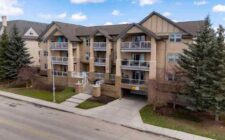In the UK, property can either be freehold or leasehold. Understanding the differences between these two types of property is essential when purchasing or owning property. In this article, we will explore the key differences between freehold and leasehold property in the UK.
What is Freehold Property?
Before exploring the differences, let’s take a look at what freehold property is all about. Freehold property is the ownership of the land and any buildings on it, including the right to use and occupy the property indefinitely. This means that the owner has complete control over the property, including the right to make any changes or renovations to the property.
Freehold property ownership is common in the UK, particularly for houses and bungalows, and is often considered the most desirable form of property ownership. Most people who get property tend to proceed with this options.
What is Leasehold Property?
Now you know what freehold property is all about. While keeping that in mind, let’s figure out what is meant by leasehold property. Leasehold property ownership is when an individual owns the property for a fixed period, typically between 99 and 999 years. The owner has the right to use and occupy the property for the duration of the lease, but ownership of the land remains with the freeholder.Leasehold property is common in the UK, particularly for flats and apartments, and is often associated with communal areas and services, such as lifts, gardens, and parking spaces.
Key Differences Between Freehold and Leasehold Property
With the understanding you have about freehold property and leasehold property, let’s compare the differences that exist in between them. These differences can help you to figure out what the best option available for you to proceed with is.
Ownership
The primary difference between freehold and leasehold property is ownership. With freehold property, the owner has complete control over the property, including the land on which it sits. In contrast, with leasehold property, the owner has a fixed-term lease on the property, and ownership of the land remains with the freeholder.
Length of Ownership
Another key difference is the length of ownership. Freehold property ownership is indefinite, while leasehold property ownership is for a fixed period, typically between 99 and 999 years. Once the lease has expired, ownership of the property reverts to the freeholder.
Responsibilities
Freehold property owners are responsible for maintaining and repairing their property, as well as any communal areas that they may have access to. In contrast, leasehold property owners may be required to pay service charges to cover the maintenance and repair of communal areas and services provided by the freeholder.
Ground Rent
Leasehold property owners may also be required to pay ground rent to the freeholder, which is a fee paid for the use of the land on which the property sits. Ground rent is typically a fixed annual amount, although it may increase over time.
Restrictions
Leasehold property ownership may come with certain restrictions, such as restrictions on alterations to the property, the use of the property, and even the ability to sublet the property. These restrictions are typically outlined in the lease agreement and may require the freeholder’s permission to change.
The ability to sell
Freehold property ownership is typically more saleable than leasehold property ownership. This is because the owner has complete control over the property, and there are no restrictions on alterations or the use of the property.In contrast, leasehold property ownership may be less attractive to potential buyers due to the restrictions and obligations associated with the lease agreement.
Cost
Leasehold property ownership can be more expensive than freehold property ownership in the long term. This is because leasehold property owners may be required to pay ground rent, service charges, and other fees associated with the lease agreement.In addition, the cost of extending a lease can be significant, particularly as the lease nears its expiration date. This can be a significant consideration for those considering purchasing leasehold property.
Final words
Freehold and leasehold property ownership have significant differences that should be considered when purchasing or owning property in the UK. Freehold property ownership offers complete control over the property, indefinite ownership, and fewer restrictions, while leasehold property ownership offers a fixed-term lease. Keep the differences in mind, and you can go for the right type of property ownership in the UK.
This article was written by a quick house sale company webuyanyhouse.co.uk If you’re wondering “how can sell my house fast”, head over to our website for more property related information and enquiries.




